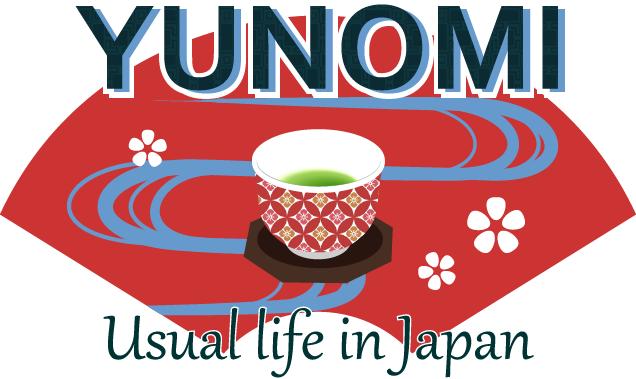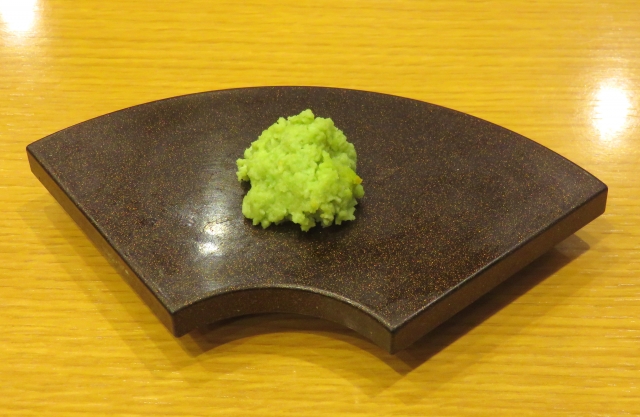Wasabi is more than a hot green paste on the side of sushi. It is a pillar of Japanese food culture, with a long history, a unique chemistry behind its punch, and everyday uses that go far beyond high-end restaurants.
This article explores wasabi’s origins, flavor science, health-related properties, and how it is prepared and enjoyed in Japan.
What Is Wasabi?
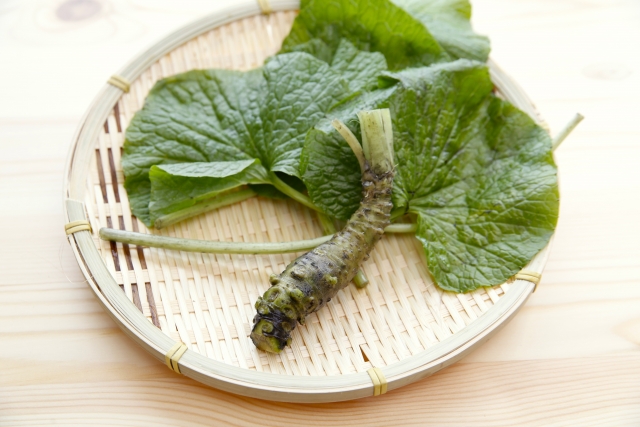
Wasabi is the rhizome of Wasabia japonica (often called Japanese horseradish). Freshly grated wasabi offers a bright, nose-tingling heat that rises quickly and fades just as fast, leaving a clean, slightly sweet aftertaste.
Grated wasabi is traditionally served with nigiri sushi, sashimi, and buckwheat noodles (soba).
History and Cultural Roots
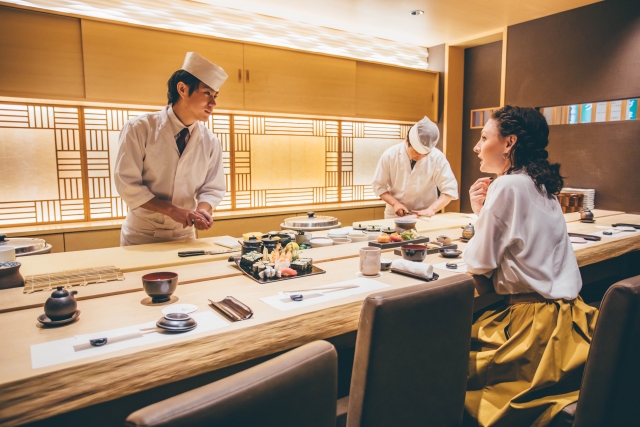
References to wasabi appear in Japanese sources dating back to the early Heian period (as early as 794 CE).
Over centuries, sushi chefs and home cooks alike embraced wasabi not only for taste but also for practical reasons—its pungency and aroma pair naturally with fresh fish and rice, and it became inseparable from Edo-style sushi culture.
The Flavor Chemistry: Why It Feels Different from Chili
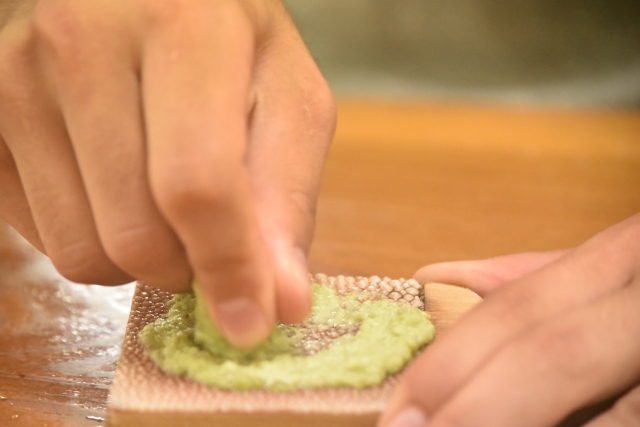
Wasabi’s kick comes from allyl isothiocyanate (AITC), which forms when plant cells are broken and enzymes react.
This volatile compound stimulates the nose more than the tongue. Because AITC disperses quickly, the heat peaks and fades within minutes—one reason chefs grate wasabi right before serving.
Food-Safety and Aroma Benefits

- Antimicrobial action: AITC helps suppress the growth of common foodborne bacteria (e.g., E. coli, Salmonella, Vibrio, Staphylococcus aureus).
- Deodorizing effect: The compound helps neutralize fishy odors and can gently stimulate the appetite with its refreshing aroma.
Before refrigeration became common in the Edo period, these properties made wasabi a smart companion to raw fish.
How to Grate Wasabi (At Home or at the Counter)
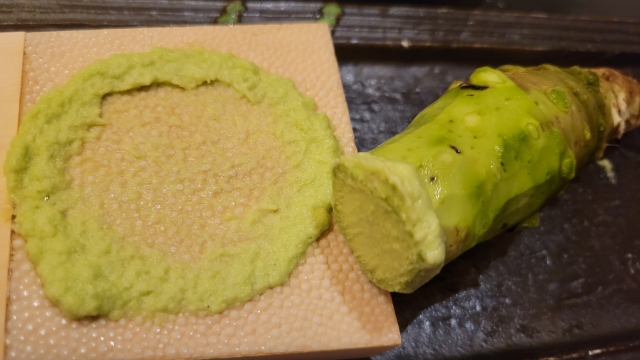
Wash the surface gently, remove petioles, and grate from the fresher stem end in small circles with light pressure. The goal is a fine, glossy cream, not a coarse mash.
- Graters: Traditional sharkskin boards (oroshi) produce ultra-fine paste; fine ceramic or good plastic works in most homes.
- Timing: Grate only what you will eat; the aroma peaks within minutes.
Real vs Imitation Wasabi (and Why It Matters)
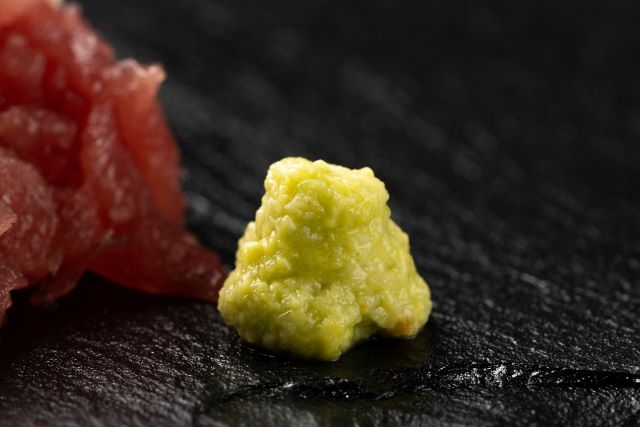
Outside of specialty restaurants, most “wasabi” is actually a convenient substitute made from horseradish, mustard, starch, oil, and green coloring.
It is affordable and shelf-stable, which explains its popularity in stores and casual eateries. Curious about how authentic wasabi differs in taste, texture, and aroma?
Read our in-depth comparison here: Real vs Fake Wasabi: The Truth Behind Japan’s Iconic Spice.
Wasabi in Daily Japanese Life
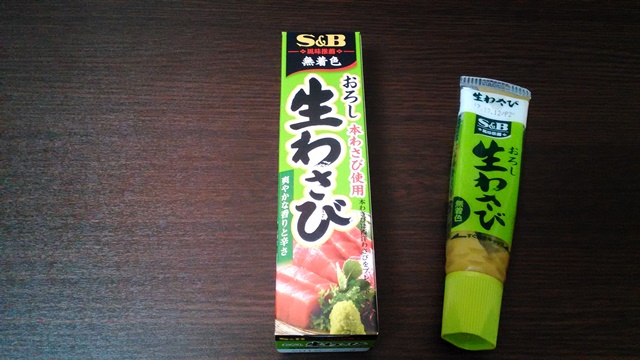
In everyday cooking, tube wasabi is common because it is inexpensive and easy to store. Some premium tubes blend in real wasabi for aroma, though stabilizers are added for texture and color consistency. For special occasions, freshly grated rhizome provides an elegant, short-lived heat that enhances rather than overwhelms.
Conclusion
Wasabi sits at the intersection of tradition, science, and daily life in Japan. Understanding its history and chemistry explains why it pairs so naturally with sushi—and why freshly grated wasabi tastes so distinct.
Whether you use a tube at home or try a fresh rhizome, you’re tasting a uniquely Japanese balance of aroma, purity, and restraint.
